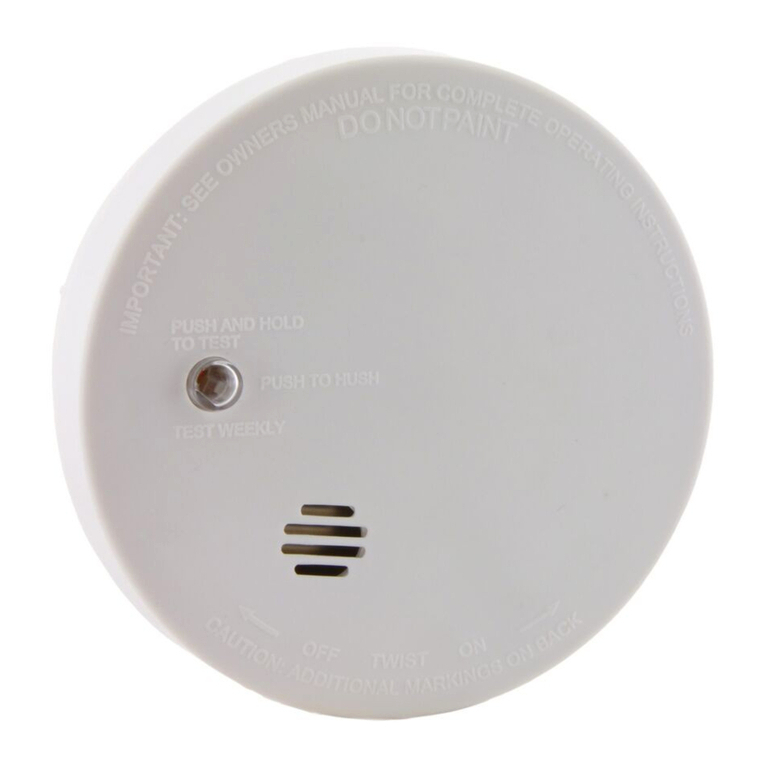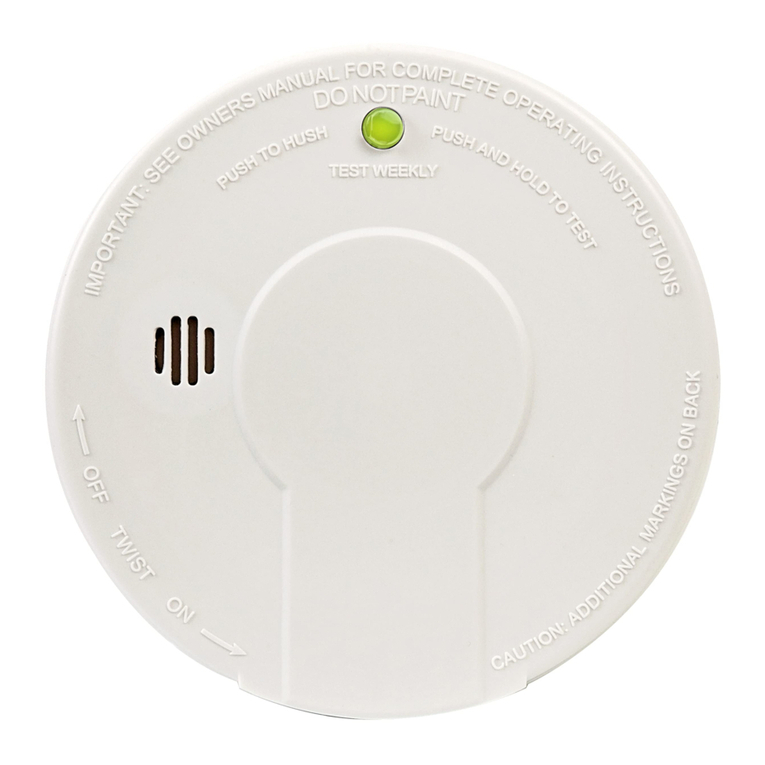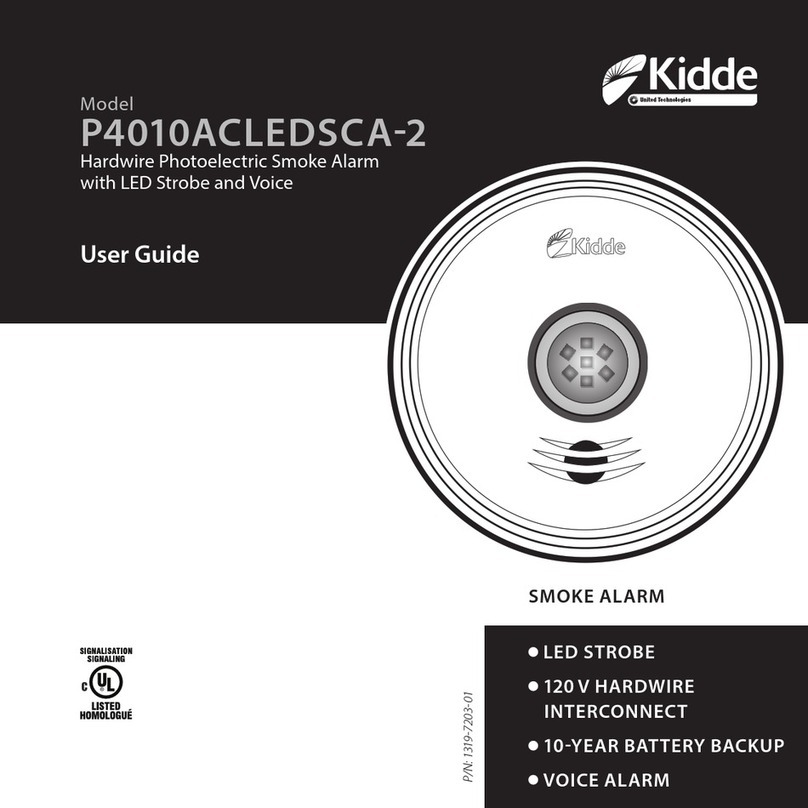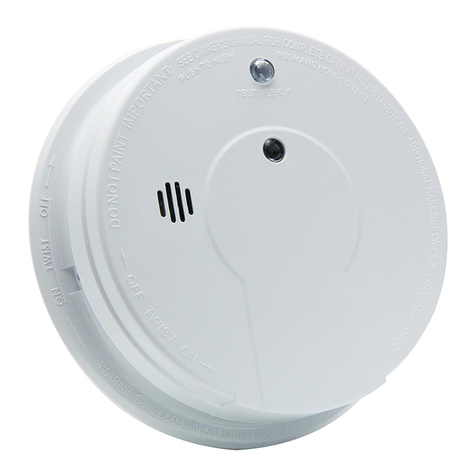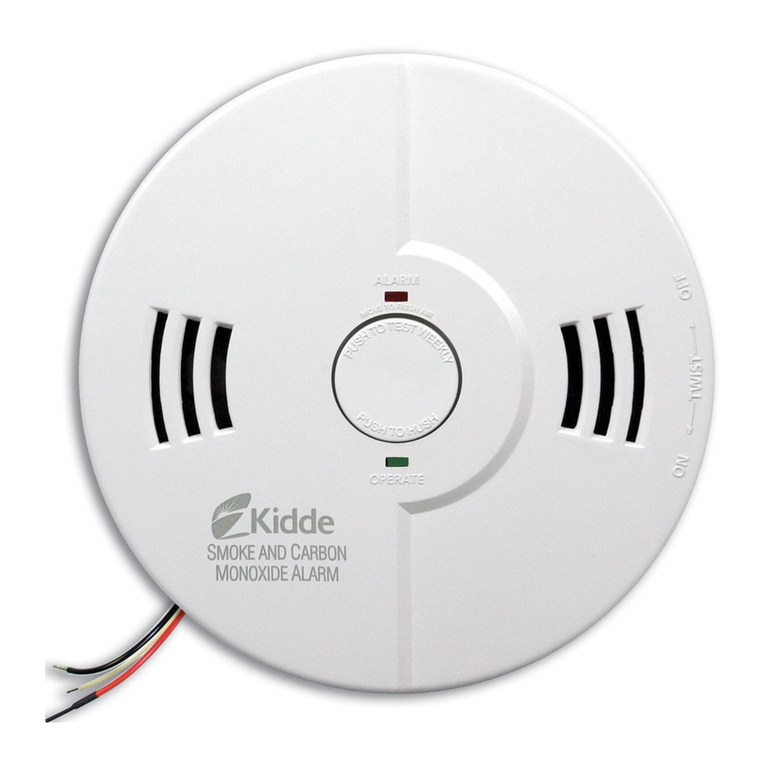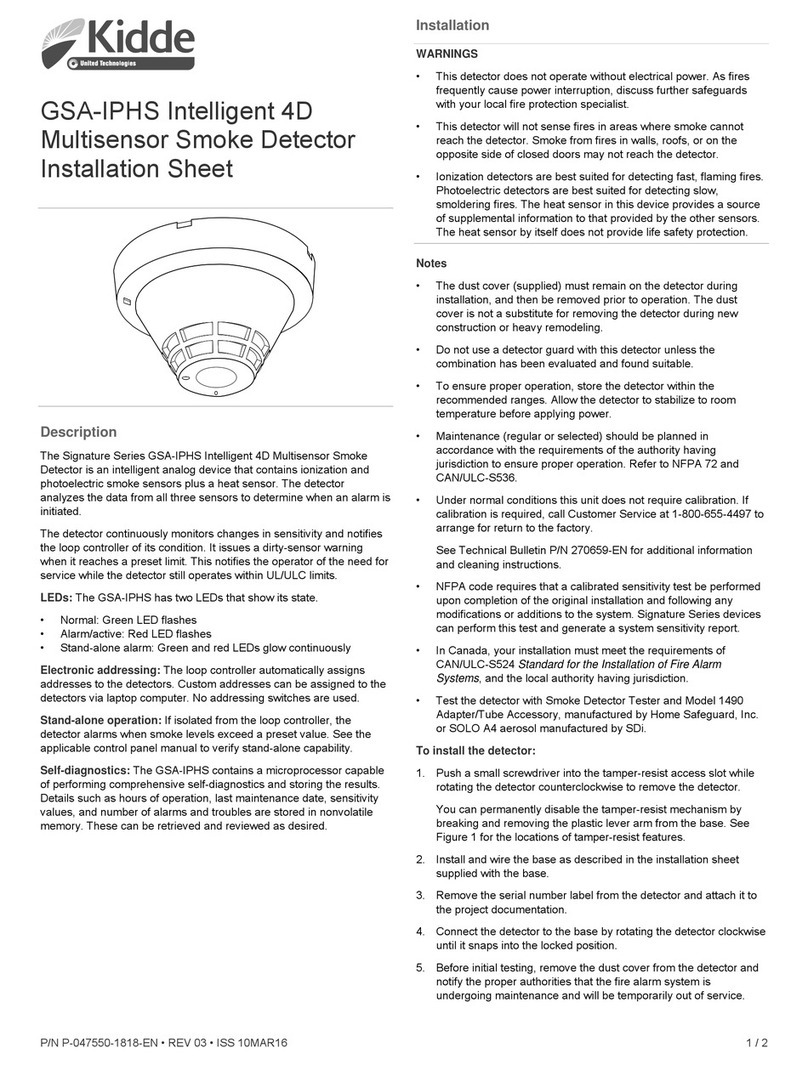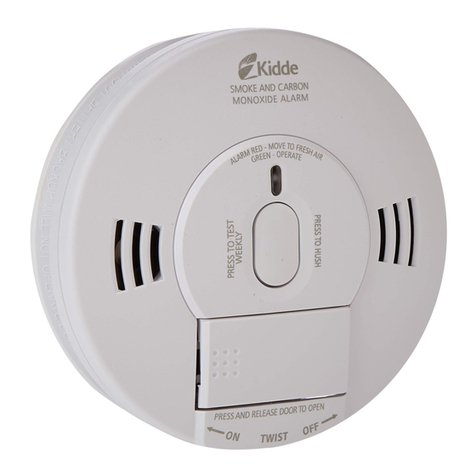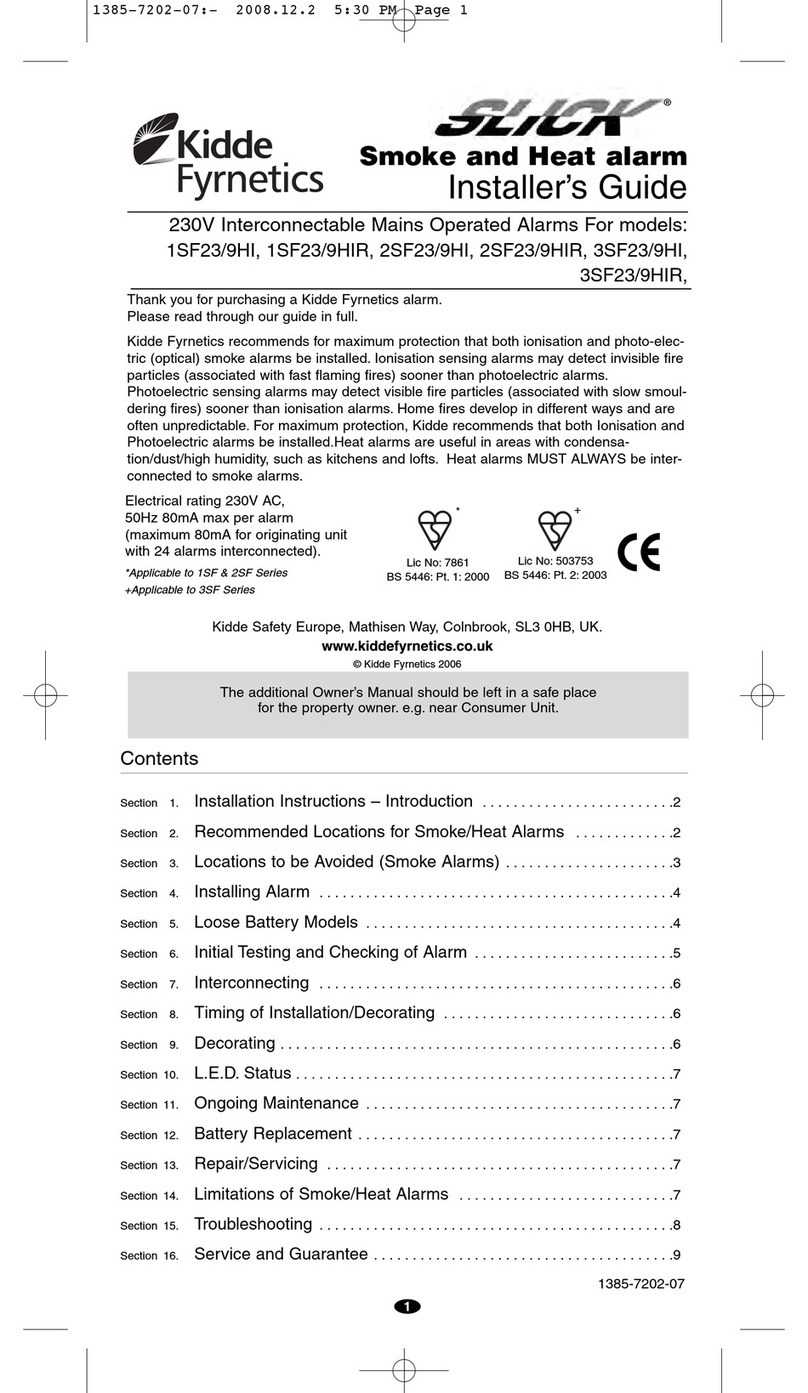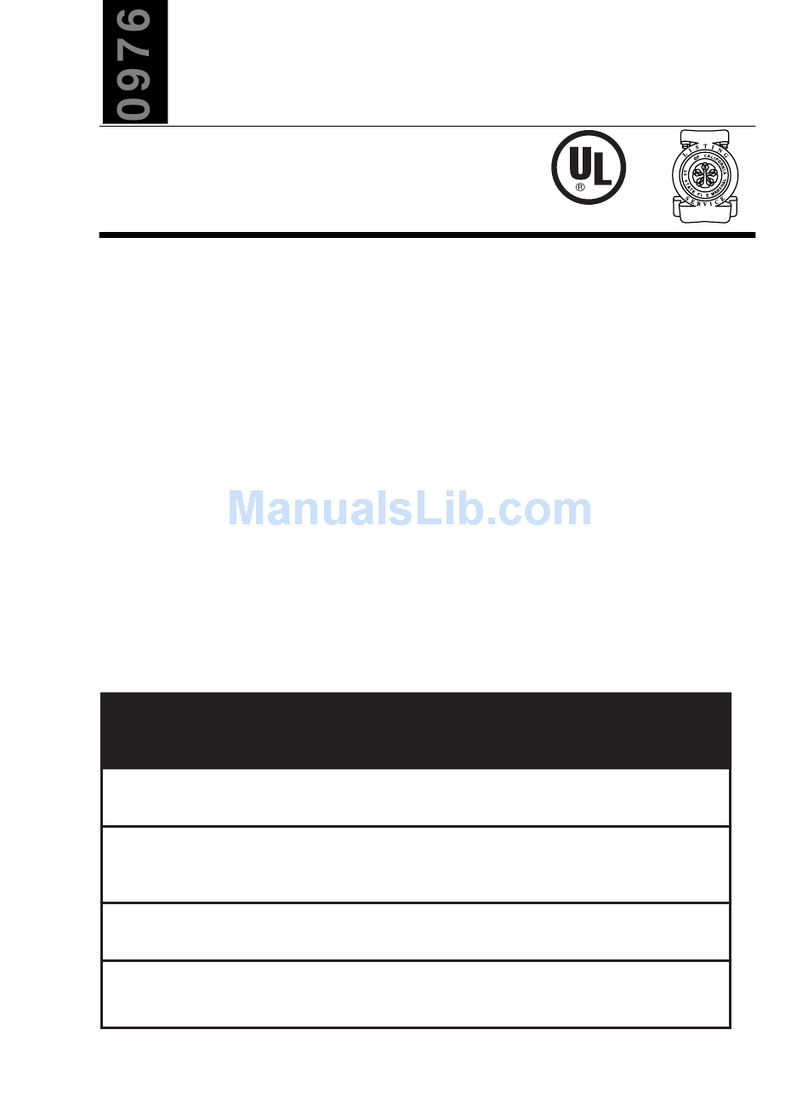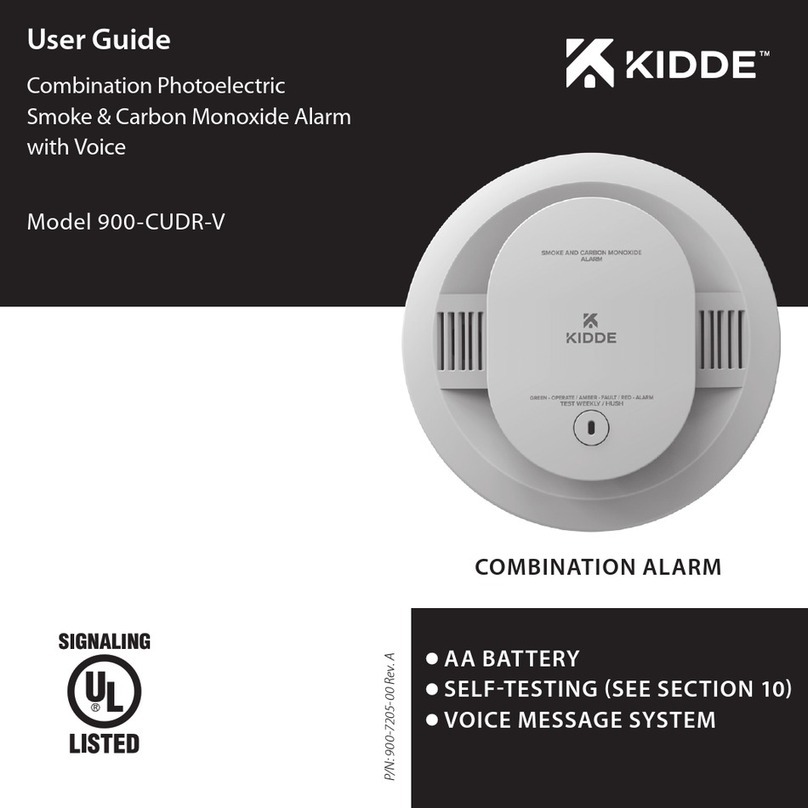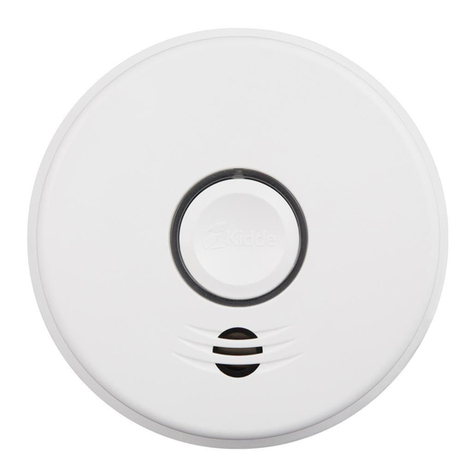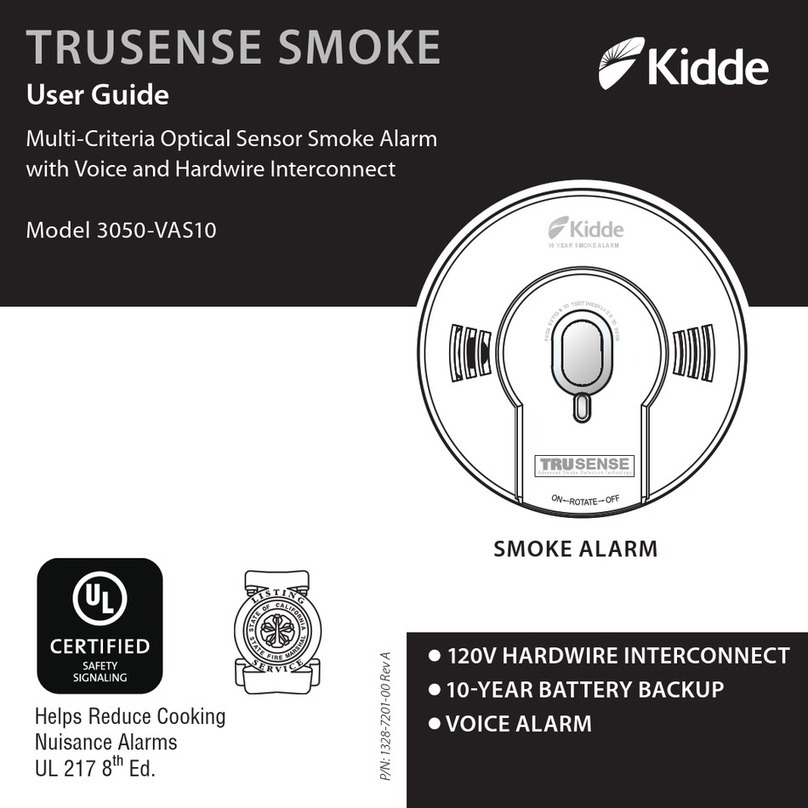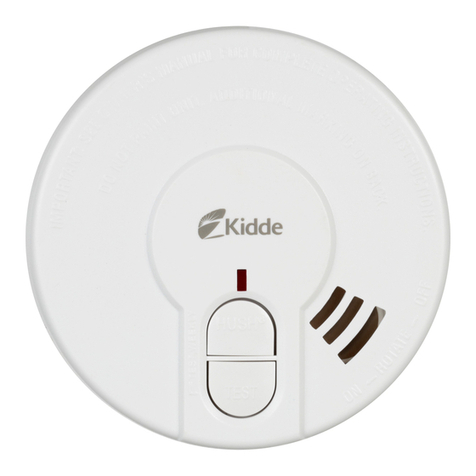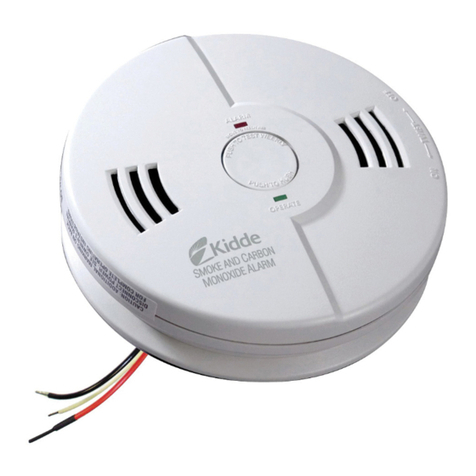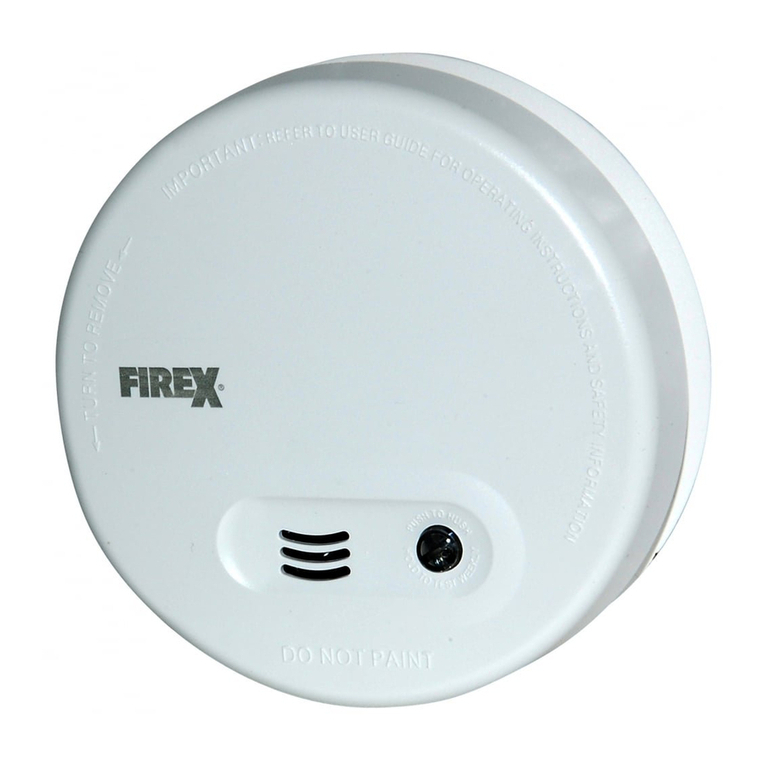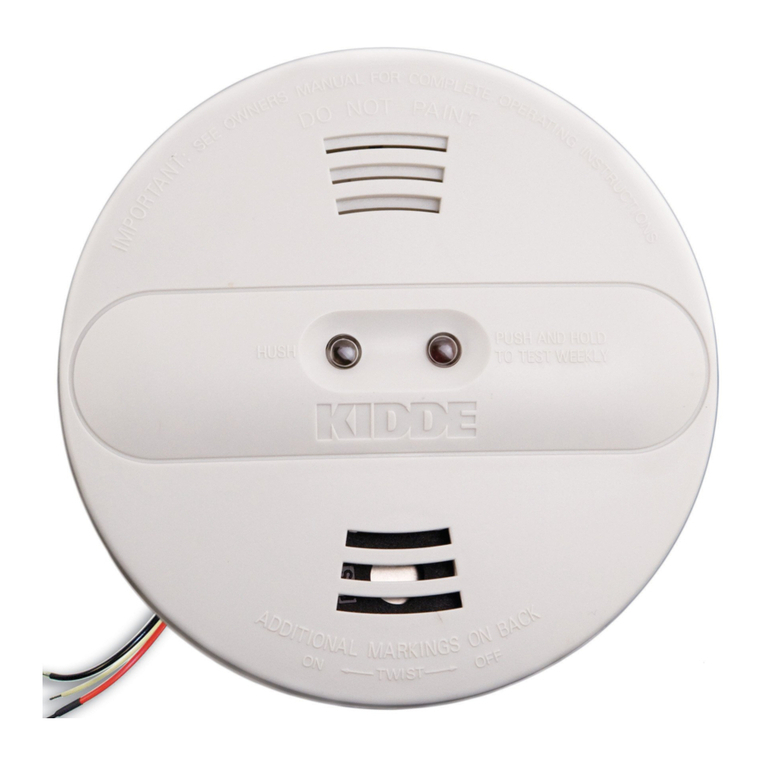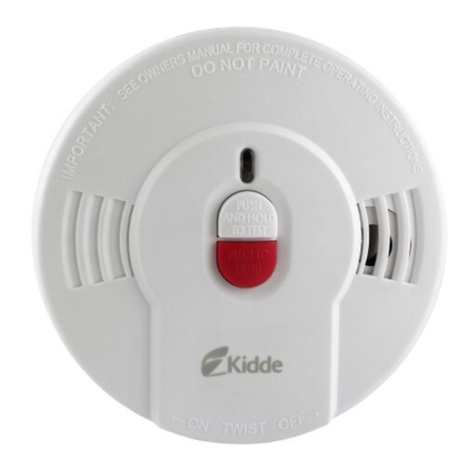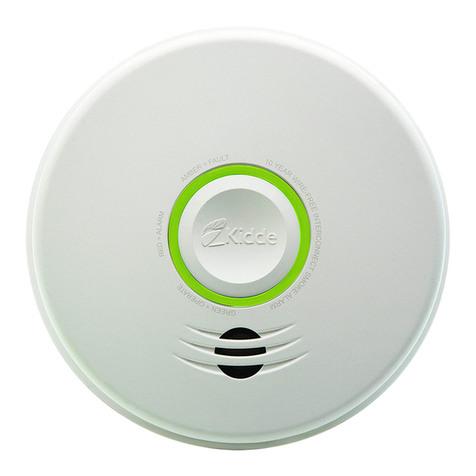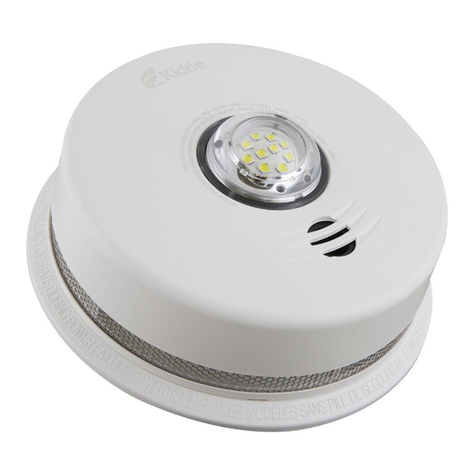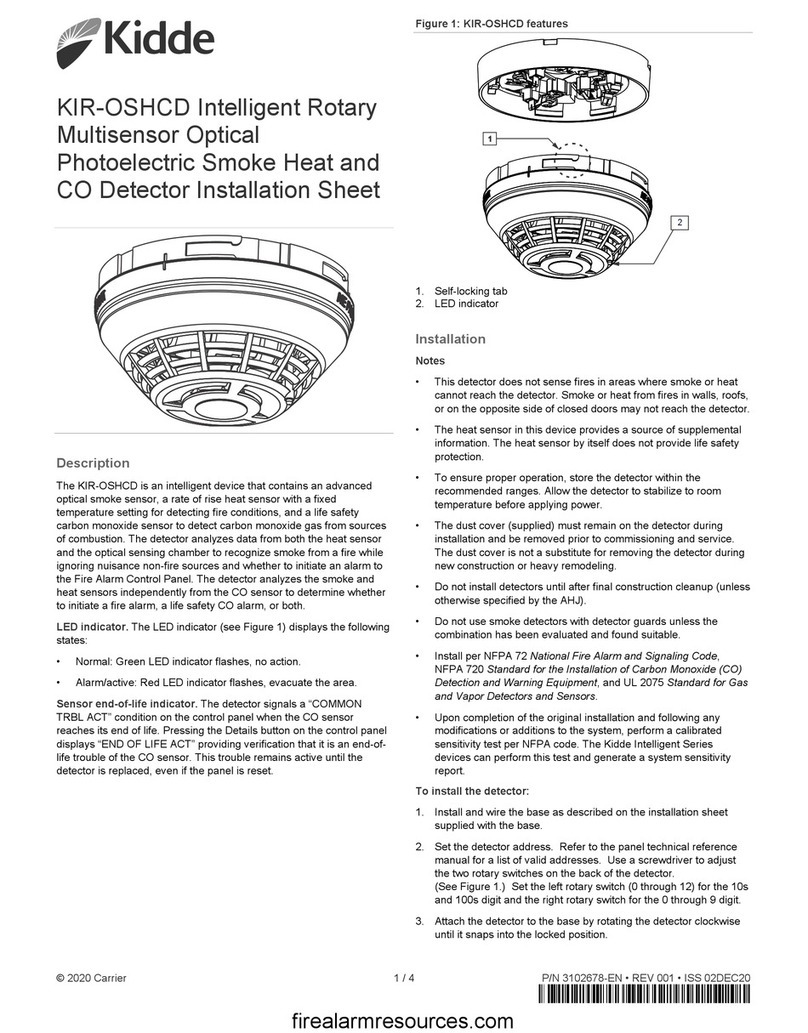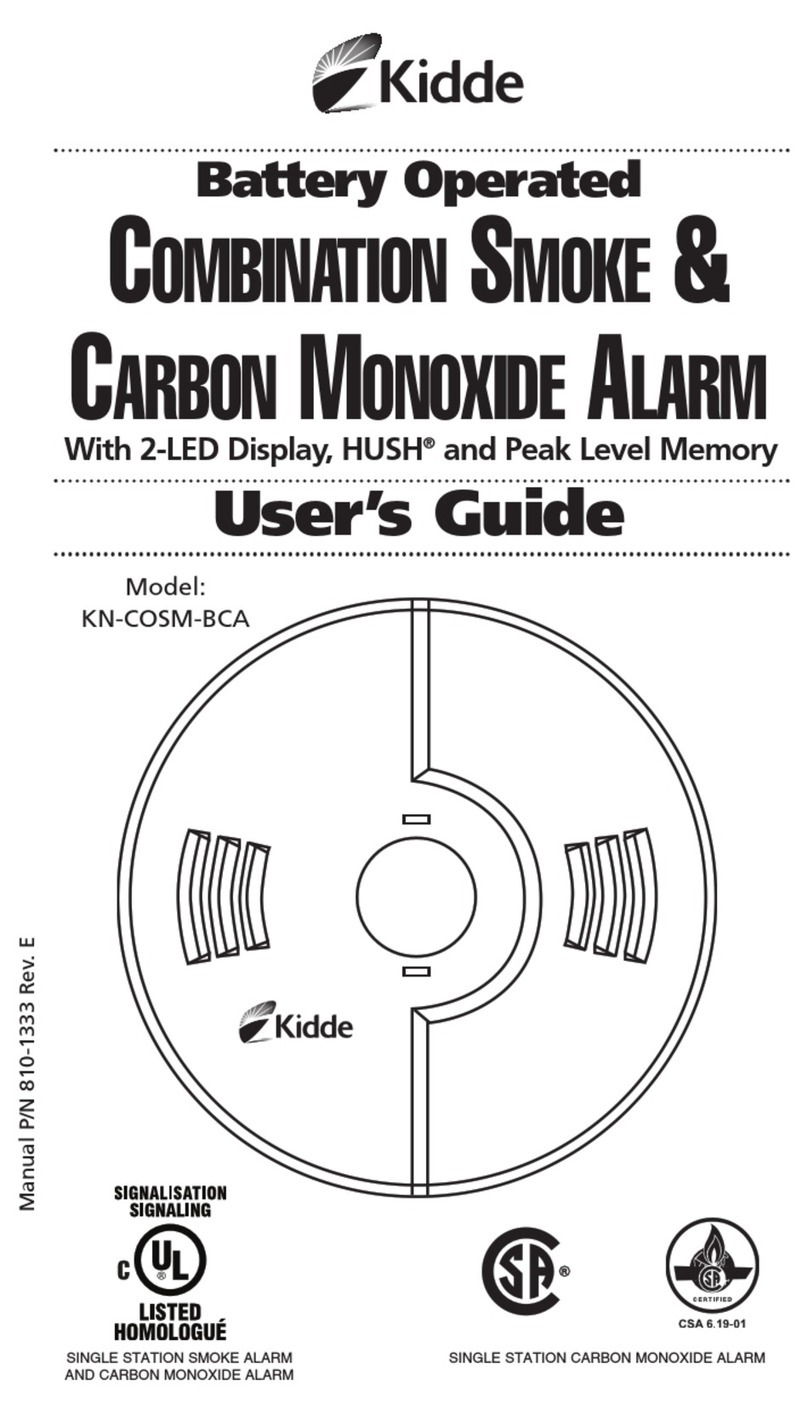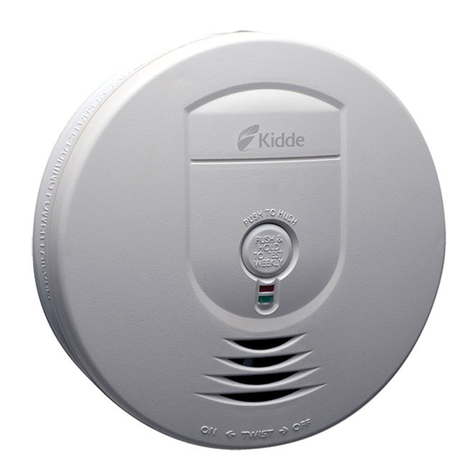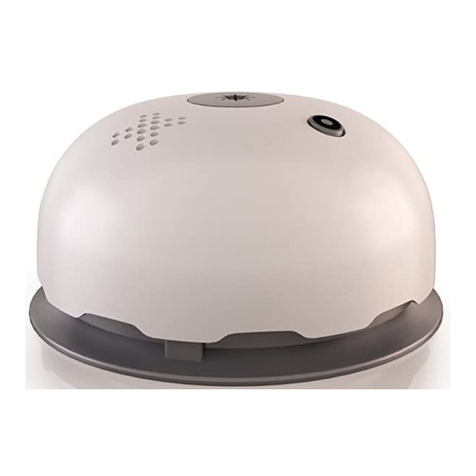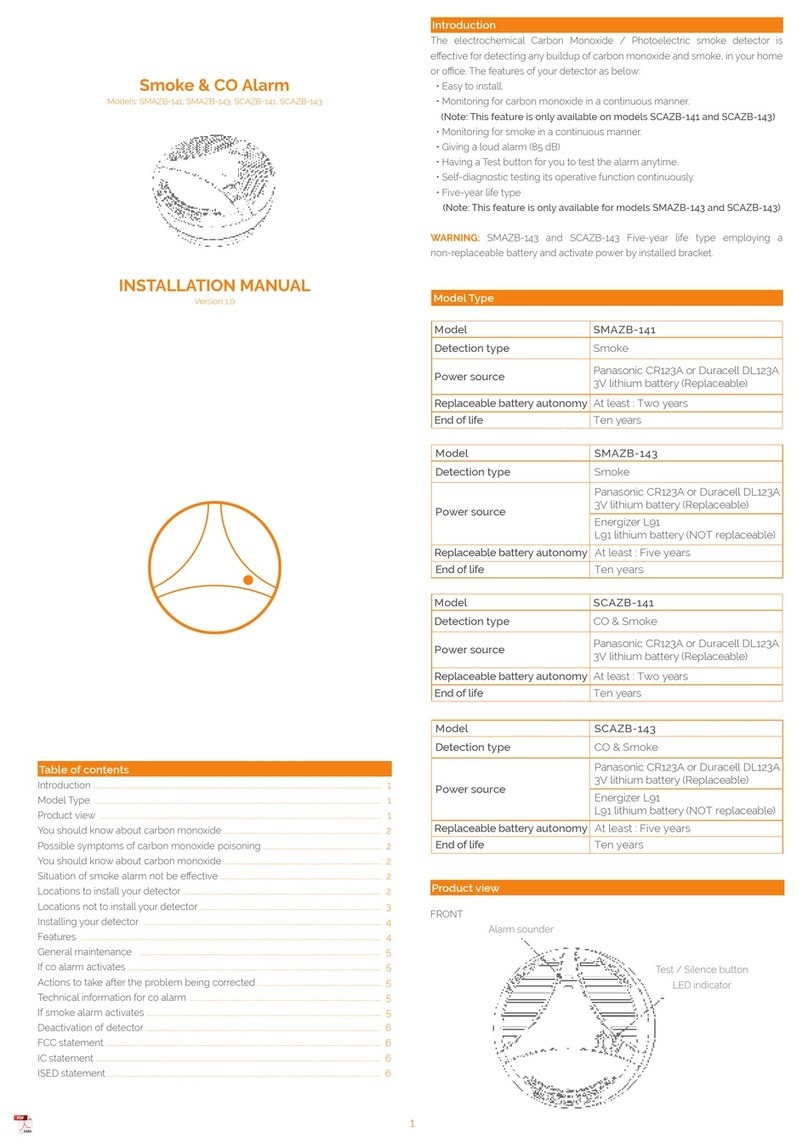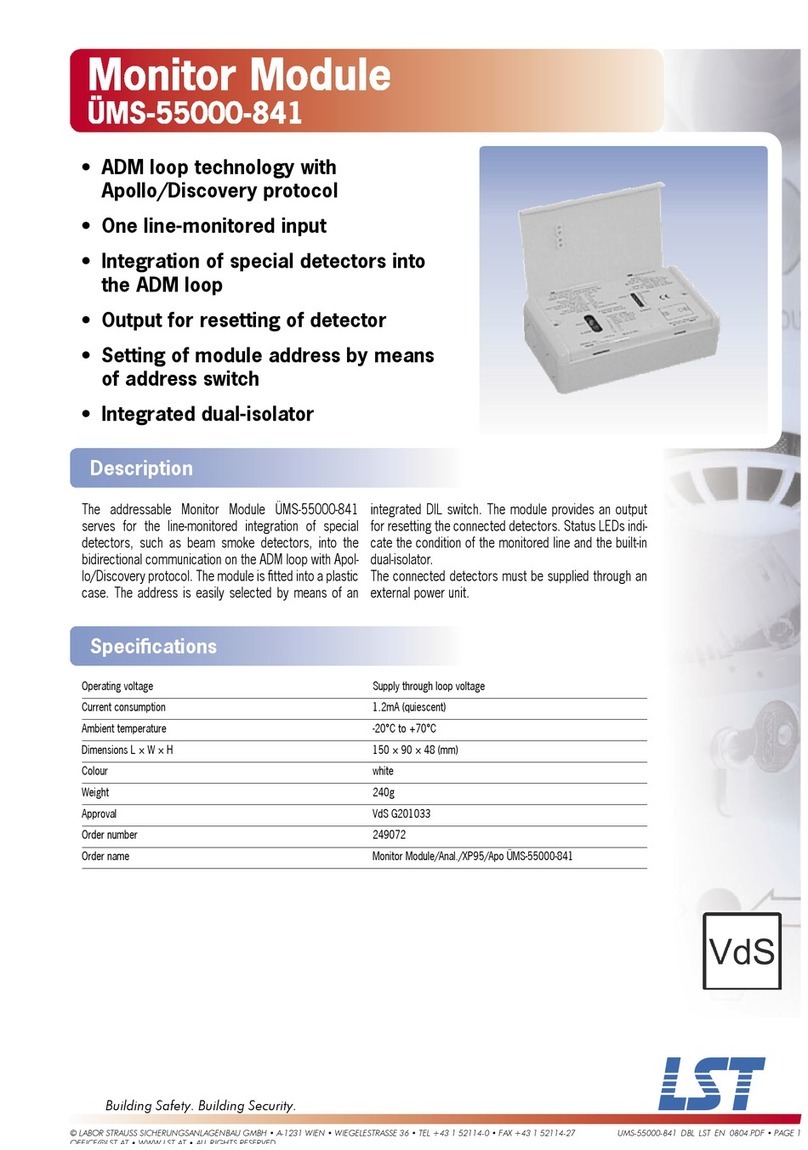
8
5. Limitations Of Smoke Alarms
WARNING: PLEASE READ CAREFULLY AND THOROUGHLY
•Life safety from fire in residential occupancies is based primarily on early notification to occu-
pants of the need to escape, followed by the appropriate egress actions by those occupants.
•There are situations where a smoke alarm may not be effective to protect against fire as
stated in the NFPA Standard 72.
For instance:
a) smoking in bed
b) leaving children home alone
c) cleaning with flammable liquids, such as gasoline
•Fire warning systems for dwelling units are capable of protecting about half of the occupants
in potentially fatal fires. A smoke alarm may not be effective in some situations, such as
during incendiary fires where the fire grows so rapidly that an occupant’s egress is blocked
even with properly located smoke alarms, or when victims are intimate with the fire (for
example, when a person’s clothes catch fire while cooking), too old or young, or physically or
mentally impaired such that they cannot escape even when warned early enough that es-
cape should be possible. For these people, additional strategies such as protection-in-place
or assisted escape or rescue are necessary.
•For maximum detection of the various types of fires that can occur within the home, includ-
ing fast flaming and slow smoldering, it is recommended that multi criteria smoke alarms
be installed. This model meets the latest residential smoke alarm standards, which includes
enhanced resistance to nuisance alarms from cooking.
•A battery powered alarm must have a battery of the specified type, in good condition and
installed properly.
